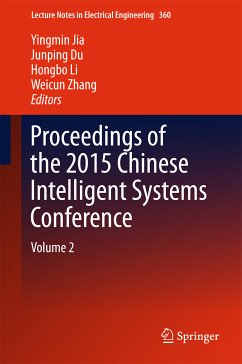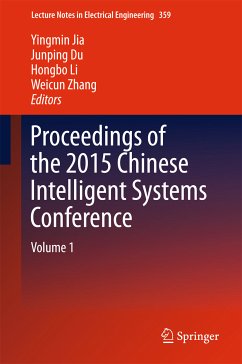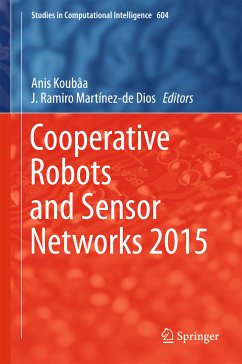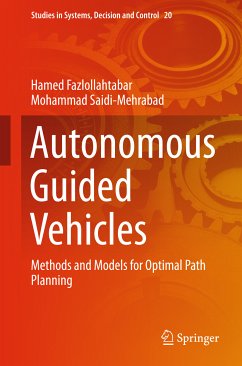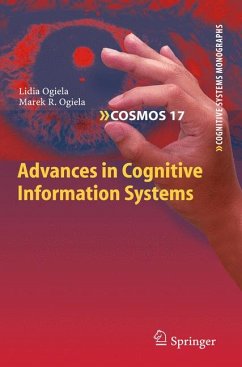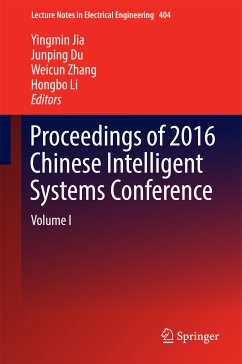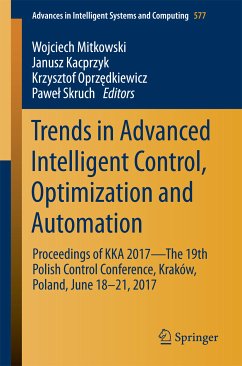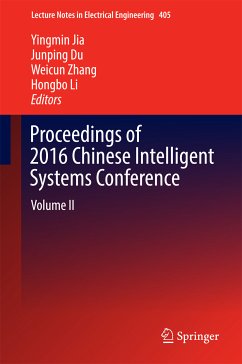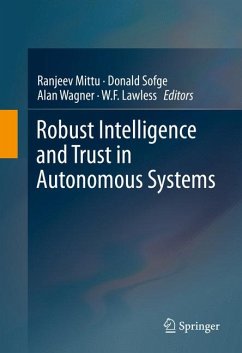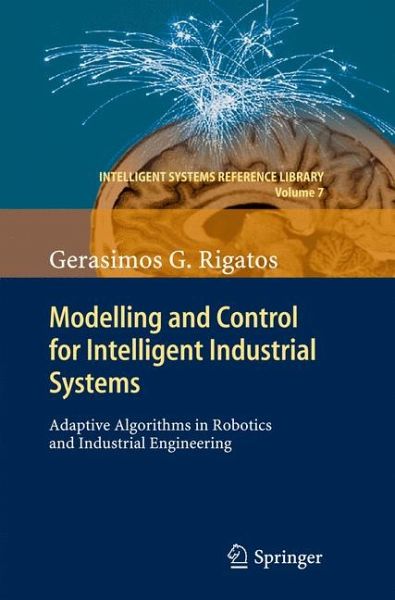
Modelling and Control for Intelligent Industrial Systems (eBook, PDF)
Adaptive Algorithms in Robotics and Industrial Engineering
Versandkostenfrei!
Sofort per Download lieferbar
113,95 €
inkl. MwSt.
Weitere Ausgaben:

PAYBACK Punkte
57 °P sammeln!
Incorporating intelligence in industrial systems can help to increase productivity, cut-off production costs, and to improve working conditions and safety in industrial environments. This need has resulted in the rapid development of modeling and control methods for industrial systems and robots, of fault detection and isolation methods for the prevention of critical situations in industrial work-cells and production plants, of optimization methods aiming at a more profitable functioning of industrial installations and robotic devices and of machine intelligence methods aiming at reducing huma...
Incorporating intelligence in industrial systems can help to increase productivity, cut-off production costs, and to improve working conditions and safety in industrial environments. This need has resulted in the rapid development of modeling and control methods for industrial systems and robots, of fault detection and isolation methods for the prevention of critical situations in industrial work-cells and production plants, of optimization methods aiming at a more profitable functioning of industrial installations and robotic devices and of machine intelligence methods aiming at reducing human intervention in industrial systems operation.
To this end, the book analyzes and extends some main directions of research in modeling and control for industrial systems. These are: (i) industrial robots, (ii) mobile robots and autonomous vehicles, (iii) adaptive and robust control of electromechanical systems, (iv) filtering and stochastic estimation for multisensor fusion and sensorless control of industrial systems (iv) fault detection and isolation in robotic and industrial systems, (v) optimization in industrial automation and robotic systems design, and (vi) machine intelligence for robots autonomy. The book will be a useful companion to engineers and researchers since it covers a wide spectrum of problems in the area of industrial systems. Moreover, the book is addressed to undergraduate and post-graduate students, as an upper-level course supplement of automatic control and robotics courses.
To this end, the book analyzes and extends some main directions of research in modeling and control for industrial systems. These are: (i) industrial robots, (ii) mobile robots and autonomous vehicles, (iii) adaptive and robust control of electromechanical systems, (iv) filtering and stochastic estimation for multisensor fusion and sensorless control of industrial systems (iv) fault detection and isolation in robotic and industrial systems, (v) optimization in industrial automation and robotic systems design, and (vi) machine intelligence for robots autonomy. The book will be a useful companion to engineers and researchers since it covers a wide spectrum of problems in the area of industrial systems. Moreover, the book is addressed to undergraduate and post-graduate students, as an upper-level course supplement of automatic control and robotics courses.
Dieser Download kann aus rechtlichen Gründen nur mit Rechnungsadresse in A, B, BG, CY, CZ, D, DK, EW, E, FIN, F, GR, HR, H, IRL, I, LT, L, LR, M, NL, PL, P, R, S, SLO, SK ausgeliefert werden.




